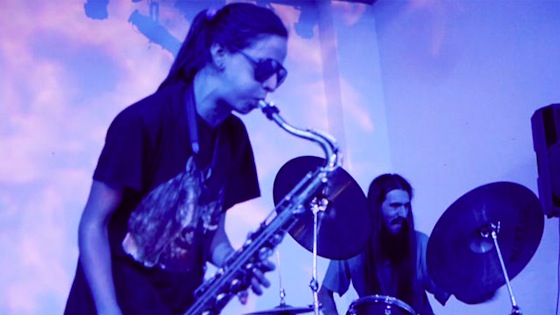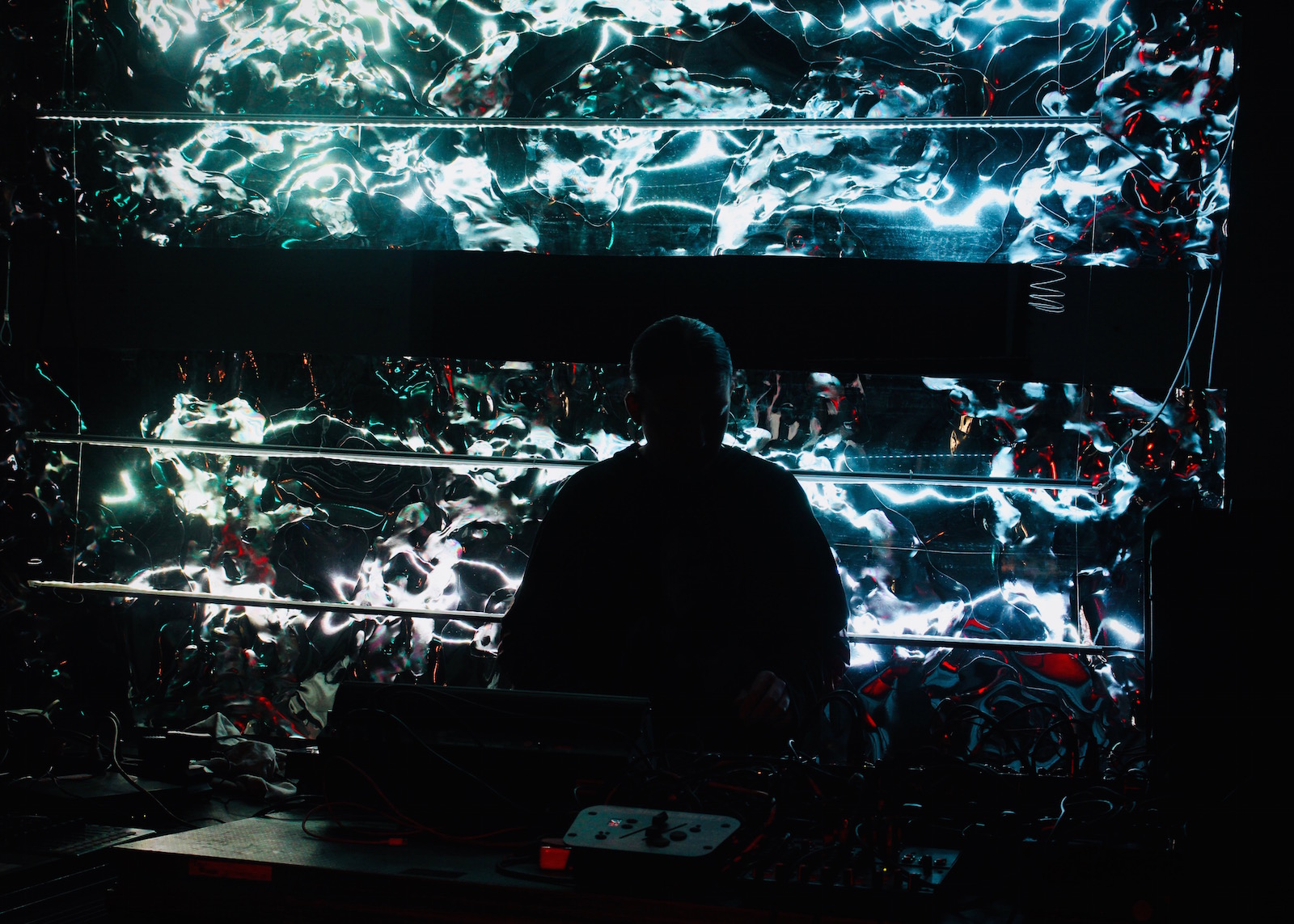Korpsånd – Black metal-heresy should be praised! (interview)

By Simon Christensen
In February this year the American tape label Fallow Field sent out a double cassette tape with a collection of new Danish black metal under the name Korpsånd, “an introduction to new wave of raw DKBM”. Korpsånd (en: corpse+spirit) that connotates both a brotherhood and rising from the dead, is a term coined by Jesper Bagger Hviid, musician, sound engineer and caretaker at the venue/rehearsing space Mayhem, and Emil Toft, musician and half of the label Hævngær.
Later “Korpsånd” was released on CD by Tour de Garde and it is now finally seeing a double-LP release in the winter as a conclusion of a great year, that also saw Korpsånd represented at the Festival of Endless Gratitude, touring abroad and playing several concerts at Mayhem in Ragnhildsgade.
However, despite the connotations to a brotherhood Korpsånd is neither the end nor the only means of this group of people who have also seen a number of international releases and individual paths through other genres than black metal. Rather it could be viewed as a banner for a series of black metal-bands who share a recording studio, a set of aesthetics and belong to the noise/experimental scene of Mayhem. Although they don’t see themselves as part of a greater metal scene in Copenhagen, Korpsånd have connections to other diy-establishments like Kill Town Death Fest, Extremely Rotten Store, Night Shroud Records, fellow Mayhem-band Slægt and the new label Nattetale.
How and where did you actually meet and when did you form this group?
Emil: “Before our bands started to affiliate there was a sort of void in the Copenhagen BM scene. I think we all shared a dissatisfaction with the contemporary metal and punk scene in Copenhagen, and of course a shared interest in wide variety of music. I believe the idea for the compilation spawned out of a show Lesion, Afkald, Blot & Bod, and Vaabnet played at Mayhem. The compilation was a good opportunity to start new projects, most of which have continued to make music since.”
Can you explain in more practical terms, what the core of Korpsånd is? Is it 12 people in a rehearsal space, or what is it exactly?
Jesper: “Not exactly. Korpsånd is merely the banner under which we move for now. Our studio at Mayhem, which is also the rehearsal space for every band that Erik, Jølle and I are in, has become the center of the group. This is where I record everything we release, but people are connected to different rehearsal spaces all over the city. Our group is tightly knit and rather few people make up a lot of different projects. For now, the Korpsånd banner still makes sense.”
In terms of artistic output and sound production, what is your common ethos and what is different among the members of the group? Listening to the compilation itself shows a variation within that black metal idiom. How do you see that? And some individuals even plays in other non-dkbm bands and projects, is that not considered heresy anymore?
Jesper: “I don’t even think we have a common ethos. We are all very different, yet very good friends. Every project has its own distinct life. This of course derives from the specific constellation of members and the common ground they establish.
The black metal idiom is extremely elastic. As are the agents within. Amongst the people of Korpsånd, there are people active in death metal, techno, power electronics, noise, abstract electronics and experimental music in general. Heresy should be praised!”
Listen to the compilation in full here:
Korpsånd translates to the ‘spirit of the corps’. What does that word envelope for you, and what is the denominator for being part of this group?
Jesper: “The word consists of two components, which make up both unity and disruption. For the latter an etymological approach is needed to set the dialectical connotations at play. ‘Ånd’ derives from Old Norse, but it is of course traceable to both Greek and Latin, and can mean spirit, mind, ghost, intellect etc. ‘Korps’ simply derives from the Latin word ‘corpus’ – body. Put together you have both infinity and finitude.
The primitive and brutal elements of our music affirm and respond to our bodily and thereby barbaric desires. The lyrics and the melodies on the other hand embraces and expresses the need to exceed these desires resulting in both deprivation and despair. This is a division all of us share.”
The music scenes of Denmark in some ways are fragmented, disintegrated (in the sense that you can be part of it, but not know, what others are doing – or not be part of it all at the same time) and in some ways they are gathered across certain venues/festivals and with a shared ideology. Do you feel like a part of a ‘scene’, that is metal scene or Mayhem-scene, or how do you see that?
Emil: “I don’t think we see our scene as a part of the metal scene as a whole, I don’t think other people do either. The division in the Copenhagen scene is quite apparent at times, sometimes due to ignorance (also on our part), but mostly because of different motives and interests. If anything, we are an associated with the noise/experimental electronic scene surrounding Mayhem.”
How would you describe the interest in and knowledge of 2nd and 3rd wave black metal (if that’s what we call it?) in Denmark and among your International peers in general today? Are you overtall satisfied with the black metal-scene in Copenhagen or what do you think needs to happen for black metal to reign again?
Emil: “The term “black metal” will often be used to sell mediocre mainstream metal-music to mediocre mainstream people. I think this type of music is seen as a final frontier in terms of extremity, because of its controversial origins, and since extremity is often a selling point in metal music, the name and visual aesthetic of BM is often misappropriated, unfortunately also in Copenhagen. Also, after the whole corpsepainted satanworshipper stereotype made its way in to popular culture, it branched into a very listener friendly and generic type of BM, which I personally despise. I don’t think the unadulterated sound of BM will ever be understood or appreciated by a wider audience, nor do I think it should be.
We are fortunate to have a good handful of people who sincerely appreciate the sound and aesthetic of the genre, without being conservative. We also have friends and allies from places all over the world, who have similar ideas of what this style of music can and should be. J.W, who is behind the label Fallow Field, has been supportive from the very beginning, and instrumental in bringing attention to our scene. Our friends from Yorkshire, Montréal and Moscow also come to mind.
For black metal to prevail, it needs to stay in the shadows, and develop in the hands of those who truly appreciate and understand it.”
How do you see today’s possibilities for recording, running a label and presenting a new wave of dkbm? It seems tape labels are fast, but also CD’s?
Emil: “Recording is constantly becoming easier, which puts focus on the creativity and preference of the artist and doesn’t confine a band to a certain level of “sound quality”. I think Jesper’s will to experiment with production and vary the recordings on both the compilation and later releases, has been crucial in trying to distinguish the sound of our bands. As far as releasing goes, cassettes are of course the preferred and most efficient way of distributing our music, due to its cost efficiency and short production time. The format of the cassette is an inherit part of the BM history and sound.
Along with my dear friend J.R (Fanebærer, Hylster etc.) I run a label called Hævngær, which focuses on releasing music from our circle of friends. A new label by the name of Nattetale has also recently emerged from the gutters of our city and will be releasing vinyl versions of some future releases from the Korpsånd circle, beginning with a 2 x 12” version of the compilation, and Fanebærer’s debut album “Fra hånd til jord”. Future releases by Hævngær include; Seidr, Jordslået, Broder, and Hollow Hand.”
The release of the Korpsånd compilation through Tour de Garde, what did it mean to you and what did derive for the bands and members?
Jesper: “Tour de Garde is a respected underground label, which has meant attention, but also recognition of our work. With that achieved, the practical aspects of the future are much easier. That aside P.M., who runs the label, has become a brother in arms. Tour de Garde now releases the music by Seidr, Hylster, Grifla da la Secta, Ærekær and soon the youngsters Skinliv.”
Being rooted in a diy-space, and a more experimental part of metal, do you work with other members of that music underground? Korpsånd was part of FOEG this year, but what about Killtown Death Fest, Ungdomshuset and other people from Mayhem (venue)?
Emil: “As Jesper pointed out; people in our circle have a vast array of different musical backgrounds and are involved in variety of projects. Some of these having ties to the places you mention. FOEG was a good opportunity to play in front of a musically curious and perceptive audience, created by these ties.”
Do you have another compilation coming out or are the bands working individually at the moment? And who should we keep an eye out for in the experimental metal in Copenhagen for the upcoming years?
Jesper: “Early next year “Korpsånd” will be released as a 2xLP through the new Danish label Nattetale. Maybe there’ll be another compilation in the future. But for the now the respective projects focus on their own paths. Just as 2018 has been a year with a lot of releases, 2019 will be the same. There are releases to come through different labels like Legion Blotan, Iron Bonehead, Convictus Tapes, Tour de Garde, Nattetale, Hævngær, Mastermind Records and Fallow Field.”
Through the years black metal has also been known for (many different) radical opinions and symbolism regarding religion, nationalism, politics, philosophy, mysticism, litterature etc. Does that still exist and do Korpsånd have an agenda in any of those matters?
Jesper: “Black metal is extreme music. In my opinion extremity can fall into two categories. 1) The radically different – something unnoticed reveals itself. This often happens as a violent intrusion of our world and is what we typically understand as the extreme. But extremity is also 2) The return of the already conceptualized. We fall into both categories, but it is at the latter I truly see us at work. Here everything, even the most despicable, gets the chance of reevaluation. So yes, that does very much still exist. Stagnation is death…
For the second half of the question – no. There is no agenda. Korpsånd is not uniform.”
What is your approach to the black metal myth and aesthetics, and is black metal still radical today?
Jesper: “I don’t feel obliged to follow any certain aesthetics. Just like any other experimental art form black metal should always seek to be radically different. Of course, sometimes counterculture becomes culture and then you must escape yourself. A lot of people still masters this circularity. In this sense we will never be done.”
https://www.youtube.com/watch?v=VrjJIObiaKQ
Info: The vinyl release of “Korpsånd” will be announced through Nattetale.



